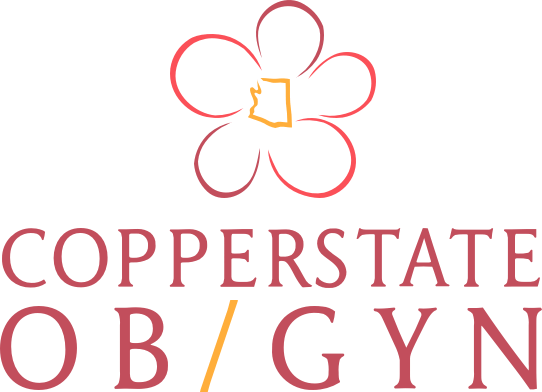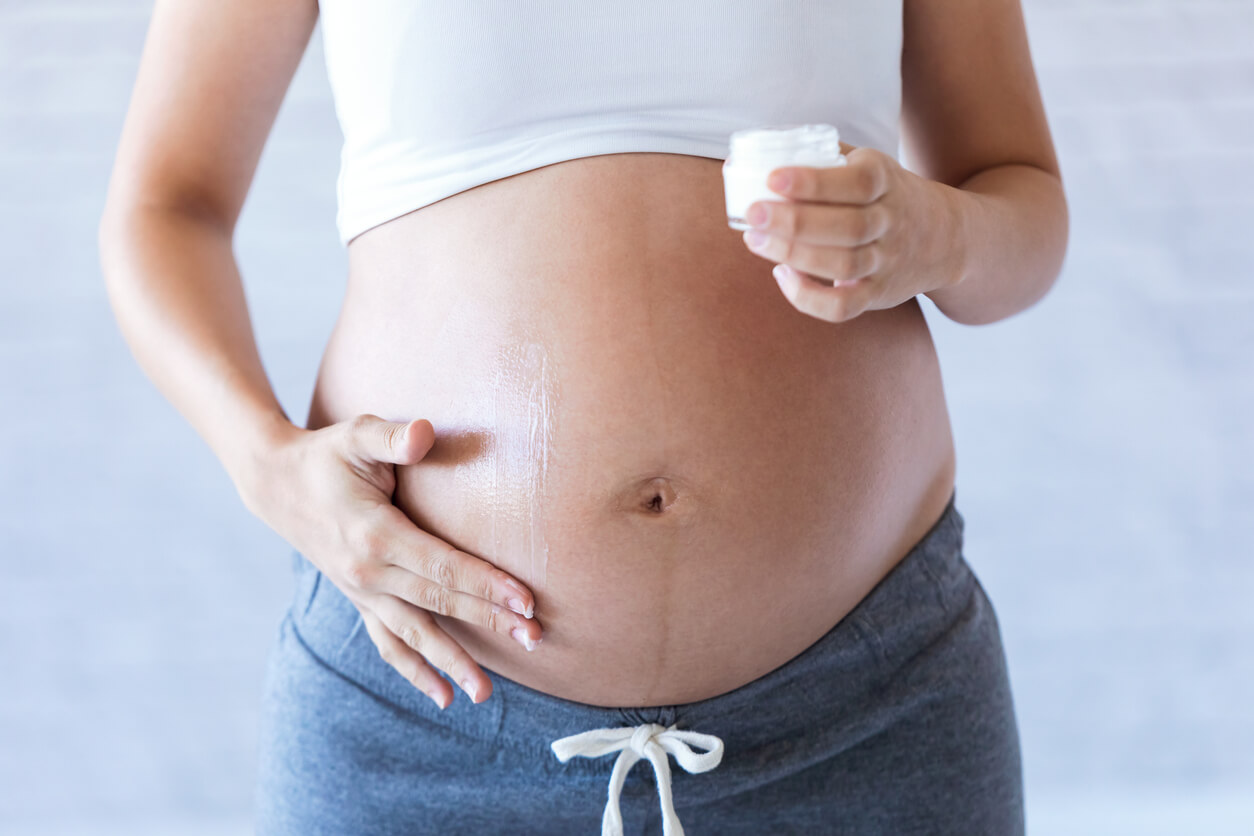Stretch marks occur when skin stretches and/or shrinks over a short period of time, and it’s an aspect of pregnancy that concerns many women. Stretch marks are very common, and occur to some degree in about 90% of pregnancies. Whether or not you get stretch marks depends on genetics, age, and/or whether you have had stretch marks (from growing during puberty, for example) in the past.
Stretch marks happen during pregnancy both due to the stretching of skin and because of the surge of pregnancy hormones that weaken skin fibers, and most stretch marks appear during the sixth or seventh month of pregnancy.
They can be frustrating to treat because stretch marks damage the skin in its middle layer, called the dermis, where collagen and proteins responsible for the elasticity of skin are found. When collagen fibers are stretched during pregnancy, they begin to break down.
Because this damage is occurring beneath the upper layer of skin (called the epidermis) it causes skin to appear discolored, wrinkled, and stretched when the collagen below deteriorates.
Can I Prevent Stretch Marks During Pregnancy?
It’s more effective to treat stretch marks when they are developing or are new (right after birth) than when they are older. While there is no surefire way to prevent getting stretch marks, there are some steps you can take to help minimize their severity and care for your skin while you are pregnant:
In the first trimester begin to moisturize the areas where stretch marks typically develop, including the belly/lower belly, back, breasts, and hips. Moisturizer protects the skin and supports the strength of collagen below. Moisturizers that contain shea butter, aloe vera, vitamin E and/or coconut oil may be most effective. Eat a healthy, balanced diet and avoid foods high in sugar, salt, and saturated fats to avoid rapid weight gain and to keep your body and skin healthy and strong.
In the second trimester thin, reddish-pink lines may start to appear. Mederma Stretch Marks Therapy may help minimize scarring, and is safe to use at this stage of pregnancy. For best results, apply this daily to the areas where these red lines appear even if you do not see immediate improvement.
There is no ‘quick-fix’ to stretch marks and so daily, healthy, habits are essential. Continue to use moisturizer as explained above on any potentially problematic areas throughout your entire pregnancy.
Treating Stretch Marks After Pregnancy
The older stretch marks are, the harder they are to treat. As stretch marks age, they shrink and become a silvery-white color.
Continuing to boost and promote the body’s collagen supply is the most effective way to diminish the appearance of stretch marks post-pregnancy. Collagen boosters are found in topical creams, in the food we eat, and certain oils. The main compounds that help promote collagen production and protect existing collagen are zinc and vitamins A, C, and E. Collagen production is also supported through certain massaging and exfoliation techniques.
-
- Collagen boosting foods: chicken, fish, shellfish, egg whites, citrus fruits, berries, tropical fruits, leafy greens, beans, tomatoes, and bell peppers.
- Collagen boosting oils: Vitamin C Serum, Vitamin E Oil, Rosehip Seed Oil, Argan Oil, Coconut Oil, and Tamanu Oil.
- Collagen Boosting Massage: Massaging areas with stretch marks improves your skin’s ability to repair, increases blood flow to the area, and increases collagen production. Derma Rollers can be effective (and easier than hand massages) as they use tiny needles to break up the damaged skin and prompt the body to produce more collagen to heal the area. It is NOT recommended to use a 1.5MM Derma Roller, but rather between a .2MM and .5MM size. Stacked SkinCare MicroRoller and the Alitura Derma Roller are two examples.
- Body Scrubs: Body scrubs exfoliate skin, stimulate blood flow, and improve circulation, so they are helpful in the treatment of stretch marks as well. Follatin Sugar & Shea Body Scrub and Rosemira Lymphatic Energizing Scrub are two examples.
Be Proud of Your Post-Baby Body
Modern culture’s obsession with pre-and-post baby bodies is unhealthy and unreasonable. Pictures of celebrities with toned abs and no stretch marks weeks, months, or even years after having a baby are not necessarily a realistic portrayal of the beautiful changes a woman’s body goes through bringing a new life into the world.
Sadly, these unrealistic expectations create a myth in women’s minds that they need to get back to the same body they had before the baby. But why should this be true at all?
Motherhood and childbearing are beautiful, and your body is a reflection of the deep love you feel for your child. Love your post-baby body with the same pure energy you put into loving your family.
While you can certainly take steps to minimize stretch marks, should you desire, we believe they need not be shunned or hidden, as they are mothers’ battle scars; a mark for the world to see that women are capable, strong, and loving.
Are you looking for an OB/Gyn you can trust? Do you live in the Tucson area? Book an appointment today!
Resources:
https://www.aad.org/public/cosmetic/scars-stretch-marks/stretch-marks-why-appear
https://www.webmd.com/beauty/what-are-stretch-marks#2
https://www.parents.com/pregnancy/my-body/how-can-i-prevent-stretch-marks-during-pregnancy/

